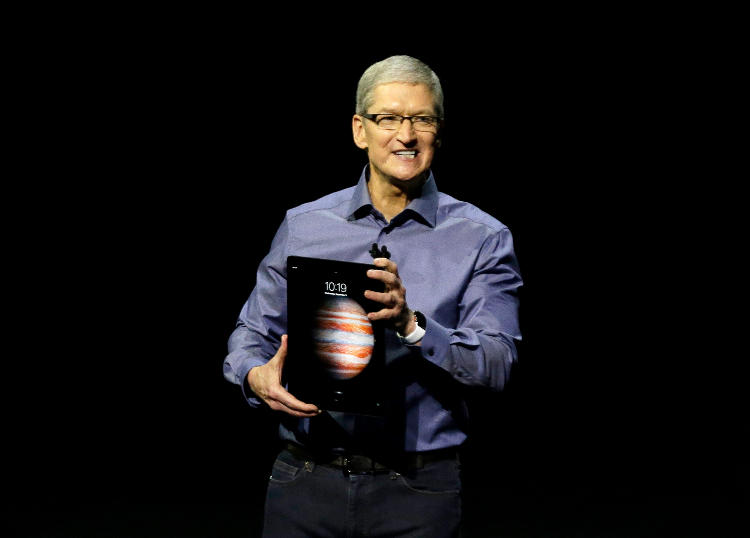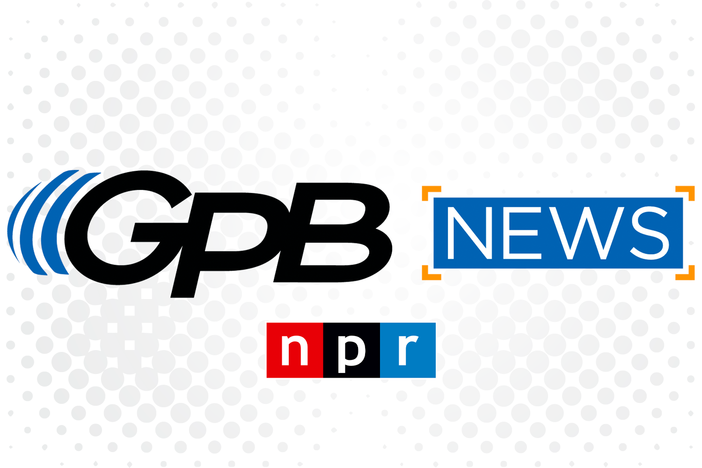
Section Branding
Header Content
Apple's Big Announcement: Evolution Or Revolution?
Primary Content

Another September, another new iPhone from Apple. The smartphones have become the big money-makers for the iconic tech company. But this week’s big Apple event in San Francisco also gave it a chance to announce refreshes of their other products, including a new, bigger iPad and an interesting update for Apple TV.
Are any of these revolutionary, or simply evolutionary? Science and technology correspondent Renay San Miguel gives his take on the new Apple products to GPB’s Bradley George.
·About halfway through the Apple Event on Wednesday, a video started making the rounds on Twitter showing its former CEO, the late Steve Jobs, actually saying “yuck” to the thought of a stylus for computers. Yet that’s one of the new products they announced this week. Just how different is Tim Cook’s Apple from Jobs’ Apple?
Jobs always said the best stylus is your finger. Longtime Apple observers and fans started sensing disturbances in the Force during the introduction of the new iPad Pro with the 13-inch screen. Apple has had tremendous success with its tablet computer since its launch five years ago, but recently it’s seen sales drop off. So this more powerful, pricier iPad – it starts at $800 - is targeting the enterprise, and we know that because Apple also announced a plug-in smart keyboard for it that serves as a cover, and a $100-dollar stylus called an Apple Pencil. If that sounds familiar, it’s exactly like what you’ll get with a Surface tablet from Microsoft, but then Apple’s history has long involved appropriating what other companies do and improving on it. But the real indication that this was not your father’s Apple was when a Microsoft vice president came out on stage at the Apple event, to help demo Microsoft Office on an iPad Pro using an Apple Pencil. This development was actually seen as more of a surrender on Microsoft’s part, because Apple is now the more valuable tech company in terms of stock price and revenue, but anybody who remembers the contentious years between Bill Gates and Steve Jobs had to be marveling at just how much things have changed.
· You mentioned revenue, and the latest iPhone, the iPhone 6, has become its best-selling smartphone yet. That’s a hard act to follow, but Apple did just that with the new iPhone 6S and 6S Plus. Yet Tim Cook himself admitted that they look the same as the previous iPhone.
The iPhone 6 that went on sale last year now brings in 70 percent of the company’s profits. The bigger screen was a big hit. All the change is really on the inside, with a faster processor and graphics capabilities, a better 12-megapixel camera, and stronger glass and aluminum. The big change here is what Apple is calling 3D Touch. When you touch the screen, the technology inside can measure how hard you’re pressing, and that brings up new menus and entries into apps and other iPhone functions. While developers may have a great time figuring out ways to use 3D Touch in games and other features, I think there may be a bit of a learning curve for users. So the 6S and 6S Plus are evolutionary, not revolutionary. I should add that another big change has nothing to do with the phone itself but how you pay for it. The new iPhones cost the same as last year’s iPhone 6, but now Apple offers its own iPhone upgrade program, where consumers can get a new unlocked iPhone every year and pay $32 a month if they buy direct from the company. They can choose their carrier then. This change I think can be laid directly at the feet of John Legere, CEO of T-Mobile who really pressured the industry to offer more options than 2-year contracts.
·Let’s move on to Apple TV. This has kind of been the forgotten product within Apple, but now that we have more people cutting their cable cords and looking at more over-the-top services, maybe the new Apple TV can take advantage of that trend?
I think so, and so does Tim Cook, who said from the stage that Apple believes the future of television is apps. This particular enhancement probably comes closest to revolutionary, not evolutionary status. The biggest gripe I have with using Netflix or Amazon or Hulu or whatever is the search, having to type in letter by excruciatingly-slow letter the name of what I’m looking for. The new Apple TV uses its Siri voice recognition to help you search for movies and TV shows by name, or even by genre, and it works across all apps. I know that other companies like Google and Microsoft and Amazon are offering up voice recognition, but what Apple demonstrated this week for entertainment viewing could be big. The Apple TV operating system is basically iOS for your TV, so your remote allows for swiping actions on the screen, and it can also be used for playing games and that’s another potential success. Apple already has this very deep and broad relationship with developers and Apple TV could let them play on a new, lucrative field. The entry price for the new Apple TV is $150, which I think could be tempting for those who are looking for entertainment alternatives.
Tags: Apple, Tim Cook, iPhone
Bottom Content

